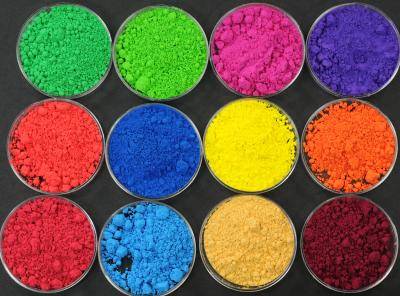Organic pigments refer to a class of pigments with color and a series of other pigment characteristics made with colored organic compounds as raw materials; organic pigments are bright in color, strong in coloring power, and non-toxic, but some varieties are resistant to light, heat, solvents and Migration resistance is often inferior to inorganic pigments.
Pigment characteristics include organic solvent resistance, heat resistance, light resistance, water immersion resistance, acid resistance, alkali resistance, crystal stability, dispersibility and hiding power, etc.;
The difference between organic pigments and dyes is that they have no affinity with the object to be colored. Only organic pigments can be attached to the surface of the object through adhesives or film-forming substances, or mixed inside the object to color the object. The intermediates, production equipment and synthesis process required for its production are similar to those of dye production, so organic pigments are often organized in the dye industry.
Compared with general inorganic pigments, organic pigments usually have higher tinting power, the particles are easy to grind and disperse, are not easy to precipitate, and the color is brighter, but they have poor light resistance, heat resistance, and weather resistance. Organic pigments are commonly used for coloring materials such as inks, coatings, rubber products, plastic products, cultural and educational supplies, and building materials.
The ratio of various structural organic pigments:
(1) Azo pigments account for 59%
(2) Phthalocyanine pigments account for 24%
(3) Triarylmethane pigment accounted for 8%
(4) Special pigments account for 6%
(5) Polycyclic pigments account for 3%

